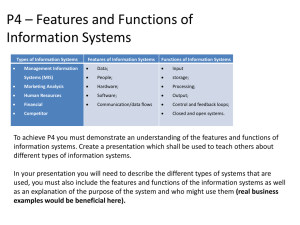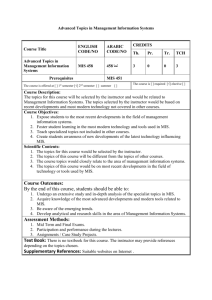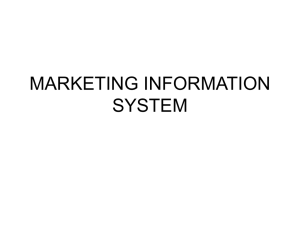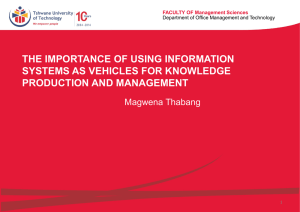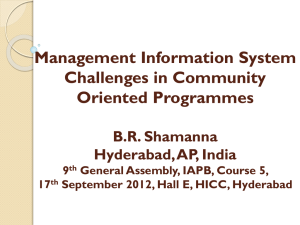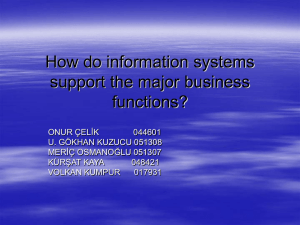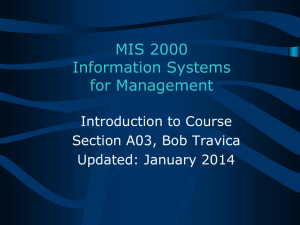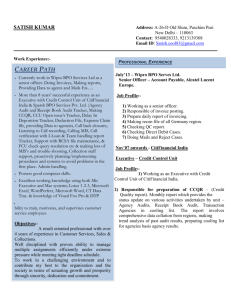Chapter 1
advertisement
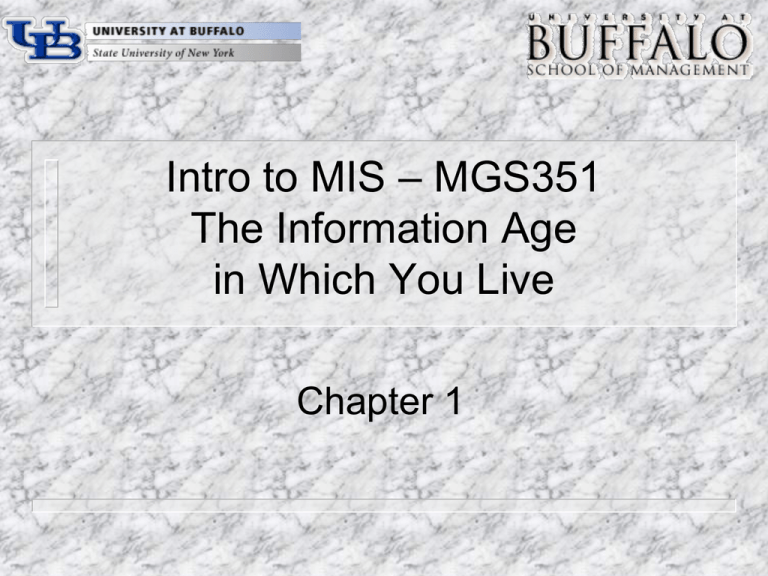
Intro to MIS – MGS351 The Information Age in Which You Live Chapter 1 Overview Introduction What is MIS? IS and Decision Making IS and Technology IS and Business MIS Careers IS Opportunities and Challenges Computer Literacy “To err is human, but to really foul things up requires a computer.” -Anonymous What is MIS? Identifying the information that is needed for effective decision making in organizations Developing information systems to satisfy those needs What is MIS? In other words….. “ MIS is using technology to create business value.” What is MIS? What do MIS professionals do? TECHNOLOGY BUSINESS Bridge the gap between business and technical minds Information Systems (IS) A set of interrelated components that collect (or retrieve), process, store, and distribute information to support decision making and control in an organization Activities in an IS INPUT PROCESS FEEDBACK OUTPUT IS and Decision Making Managerial Levels Senior managers: long-range strategic decisions about products and services Middle managers: Carry out the programs and plans of senior management Operational managers: monitor the firm’s daily activities Data versus Information To make good decisions, accurate data can be transformed into information. Information Processing Cycle Input Process Output Storage (Data) (Information) Data versus Information Data and Information Characteristics of Good Information Subjective Value Relevant Timely Accurate Meaningful Format Complete Accessible IS and Technology Hardware, software, databases, networks and other related components Computers and other technologies are used to build information systems What technology should be used? Information Systems in Business Functional Areas of Business – Sales and Marketing – Manufacturing / Service – Finance / Accounting – Human Resource Cross Functional Widening Scope of IS Careers in MIS What does it take to succeed? SOFT SKILLS Communication Teamwork Patience Creativity Decision Making TECHNICAL SKILLS Technical Curiosity Problem Solving Analytical Programming Synthesis BUSINESS SKILLS! Careers in MIS Project Managers / CIO System Design Software Design Internet Database Network / Telecommunications System Analyst MIS Career Outlook 5 fastest growing occupations between 2008 and 2018 for individuals with a Bachelor's degree: - Biomedical engineers - Network systems & data communications analysts - Financial examiners - Athletic trainers - Computer software engineers, applications Source: U.S. Department of Labor Bureau of Labor Statistics http://www.bls.gov/oco/oco2003.htm#occupation_d MIS Career Outlook Projected percent growth in occupations from 2008 to 2018 - Network systems & data communications analysts (53.4%) - Computer software engineers, applications (34%) - Computer software engineers, systems software (30.4%) - Network & computer systems administrators (23.2%) - Computer systems analyst (20.3%) - Database administrators (20.3%) Source: U.S. Department of Labor Bureau of Labor Statistics http://www.bls.gov/emp/ep_table_103.htm http://data.bls.gov/oep/nioem IS Opportunities Increase worker productivity Enhance decision making Improve team collaboration Create business partnerships and alliances Enhance global competitiveness Support corporate strategy Improve quality of goods and services Rapidly changing technology IS Challenges Workforce downsizing Information overload Employee mistrust Difficult to build Security breaches Rapidly changing technology




